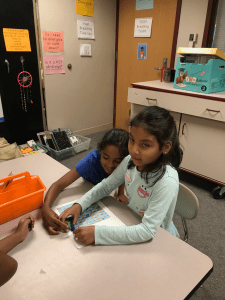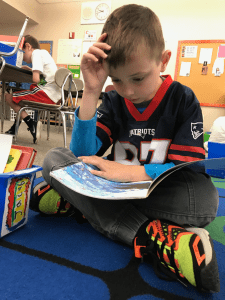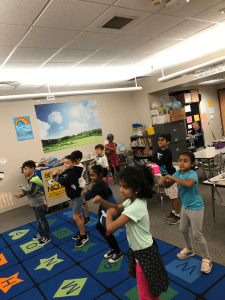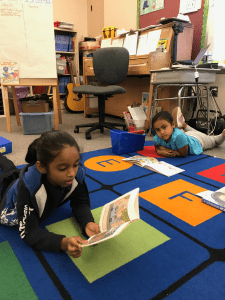Posted by kavery508 | Posted in Uncategorized | Posted on September 9, 2019
Promoting the social and emotional development of kids is a priority at the district and state levels. As we build our classroom community, students will engage in lessons around diversity and acceptance. This week, we’ll read together One: A crayon’s story, by Michael Hall. (Click the book cover to see it read aloud.) This allegorical tale sends the message that we all have a unique inner self, one that often belies what is seen on the outside and is subject to categories and labels. The kids will be sharing thoughts and feelings about what makes them special, in a supportive environment.
Supplies A few times during our year, I will be asking for your help with supplies to keep our classroom and kids healthy. If you haven’t yet done so, please send in 1 box of kleenex, 1 tub of antibacterial wipes, and 1 box of bandaids (plain, not antibacterial). This will help immensely!
CORI Background Checks Do you have a current CORI background check with the Town of Shrewsbury? You can download a form using the link under “Parent Resources” on the right side of this blog! Parents who wish to chaperone field trips, visit classrooms or even join their children for lunch in the cafeteria must have an approved background check. The process is simple: drop by the Floral school office any school day; bring your CORI form or fill one out there; and present a driver’s license or proof of identity. It usually takes a couple of weeks to be approved, so the sooner you have it done, the easier it will be for last-minute plans.
 Building stamina for reading is an important strategy for young readers. Students have been working hard at it every day and learning what it looks like and feels like to really engage with texts at their levels during Read to Self time. This week, students will learn the ins-and-outs of reading with a partner (what we call Read to Others). At Read to Others time every day, students sit side-by-side and take turns reading from the same book or different books. They both look at the text while it’s being read, and take turns summarizing a page or section of text. Research supports this as a way to increase engagement, build fluency, and improve comprehension of what was read or heard! This video shows how the strategy is introduced (source: The Balanced Literacy Diet via Youtube)
Building stamina for reading is an important strategy for young readers. Students have been working hard at it every day and learning what it looks like and feels like to really engage with texts at their levels during Read to Self time. This week, students will learn the ins-and-outs of reading with a partner (what we call Read to Others). At Read to Others time every day, students sit side-by-side and take turns reading from the same book or different books. They both look at the text while it’s being read, and take turns summarizing a page or section of text. Research supports this as a way to increase engagement, build fluency, and improve comprehension of what was read or heard! This video shows how the strategy is introduced (source: The Balanced Literacy Diet via Youtube)
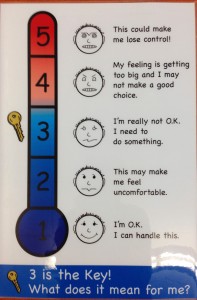 Self regulation is at the heart of teaching children to care and building a learning community. To help them achieve it, students are being taught to monitor their emotions using a social thinking thermometer. Notice the key? We say “3 is the key,” meaning it’s time to ask for help or use a strategy. One such strategy with proven success is yoga for kids. We’ve been practicing poses that focus on breathing and bringing down the temperature on our thermometers! For more on the importance of breathing for self-regulation, here’s an article from Peter Montminy. And here’s a good tutorial on breathing for kids from Gaia via Youtube!
Self regulation is at the heart of teaching children to care and building a learning community. To help them achieve it, students are being taught to monitor their emotions using a social thinking thermometer. Notice the key? We say “3 is the key,” meaning it’s time to ask for help or use a strategy. One such strategy with proven success is yoga for kids. We’ve been practicing poses that focus on breathing and bringing down the temperature on our thermometers! For more on the importance of breathing for self-regulation, here’s an article from Peter Montminy. And here’s a good tutorial on breathing for kids from Gaia via Youtube!
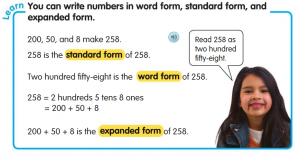 The math focus this week is all about numbers: how to understand them using their place value; how to recognize and identify them in standard, word, and expanded form; and how to add/count by 1s, 10s, and 100s by understanding the value of each digit. It is especially important that students develop an understanding of the hundreds, tens, and ones involved in these numbers. They will engage in various activities with base ten blocks, base ten pictures, and with written numbers.
The math focus this week is all about numbers: how to understand them using their place value; how to recognize and identify them in standard, word, and expanded form; and how to add/count by 1s, 10s, and 100s by understanding the value of each digit. It is especially important that students develop an understanding of the hundreds, tens, and ones involved in these numbers. They will engage in various activities with base ten blocks, base ten pictures, and with written numbers.
Another important skill with which students struggle at first is finding the missing addend or minuend/subtrahend (algebraic thinking). For example, they will be asked to solve problems such as ____ – 20 = 351, or 268 + ____ = 288. Even solving these up to 10 or 20 can be hard at first ( 9 + ____ = 15, etc.) I recommend going to GregTangMath.com for practice. Select the Missing Numbers game, and work your way up through easy and hard addition and subtraction. As with all of his games, the short length of each round can be misleading: it’s meant to provide quick gratification and feedback while discouraging fatigue. However, when you play, shoot for a time-related goal (e.g. 10 minutes or more total). When kids are done they’ll have solved tens of computational problems, if not more!


